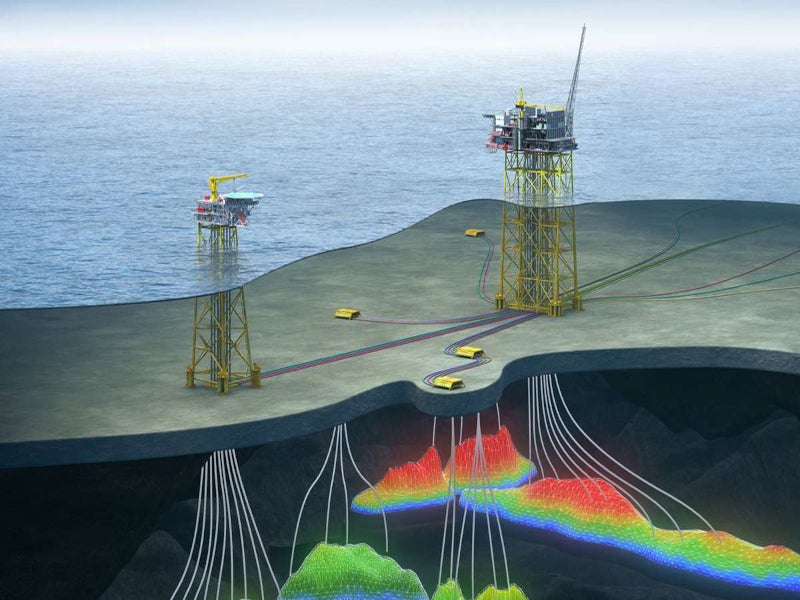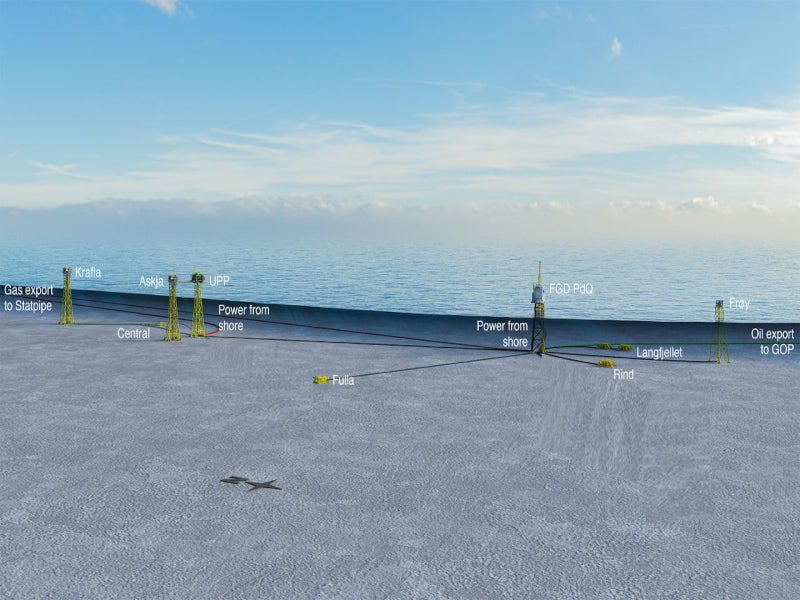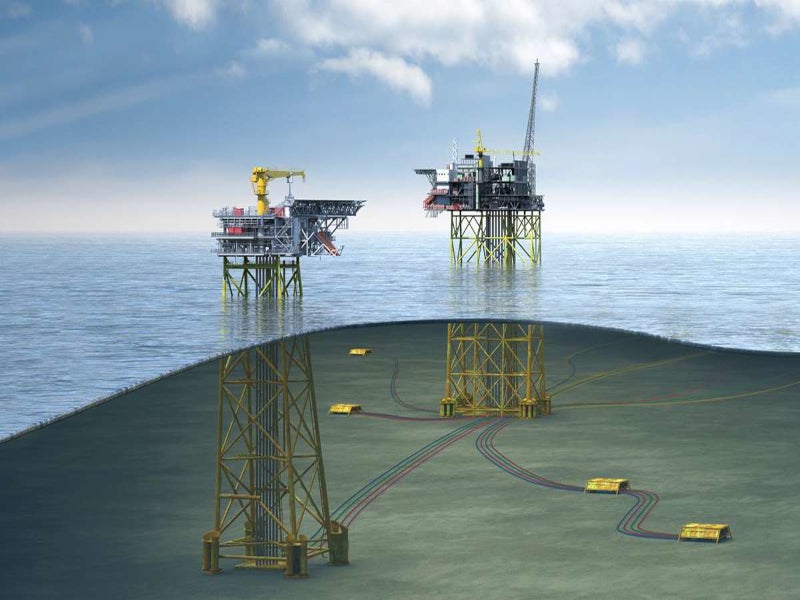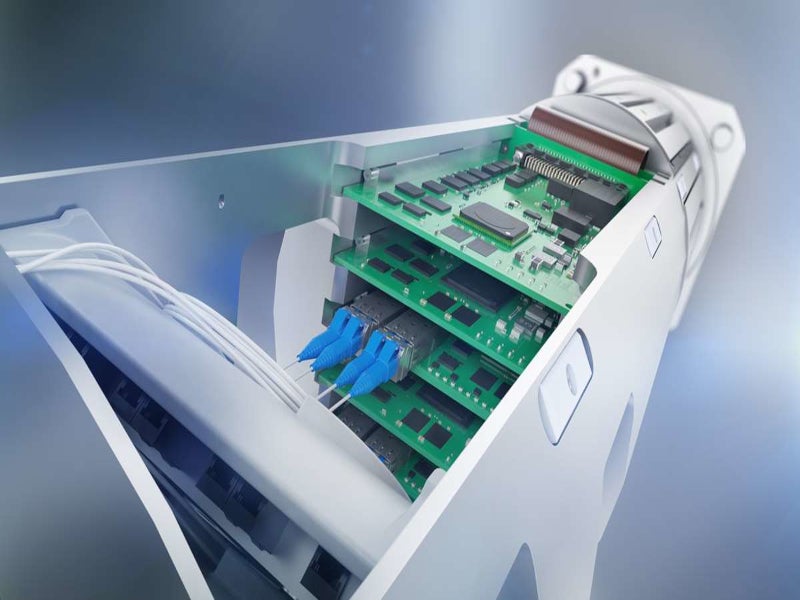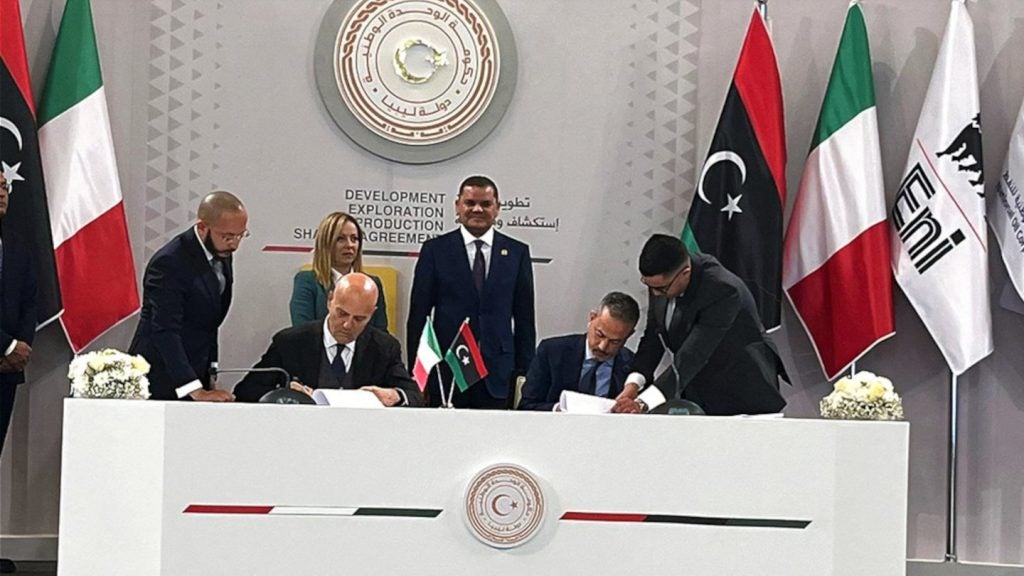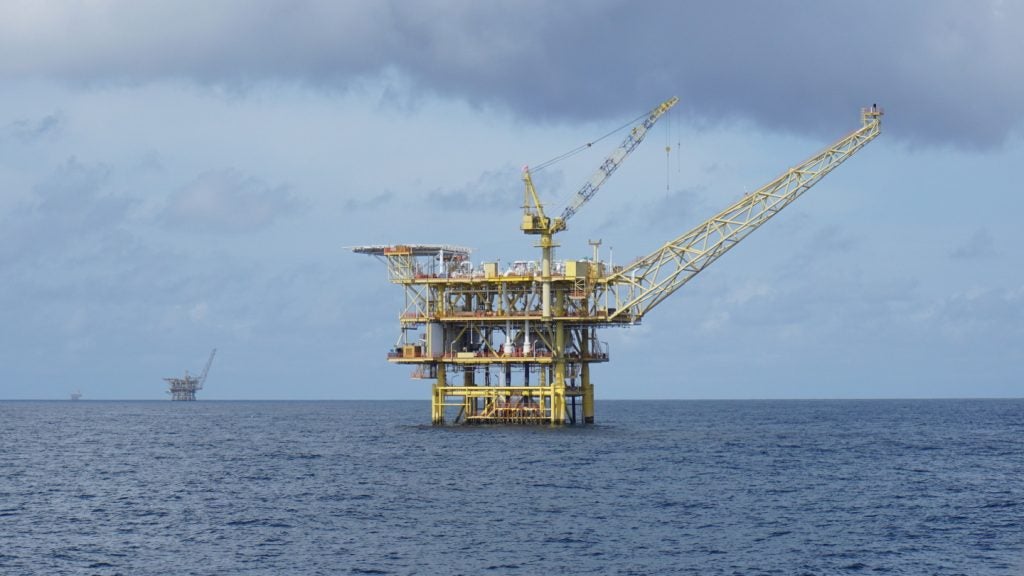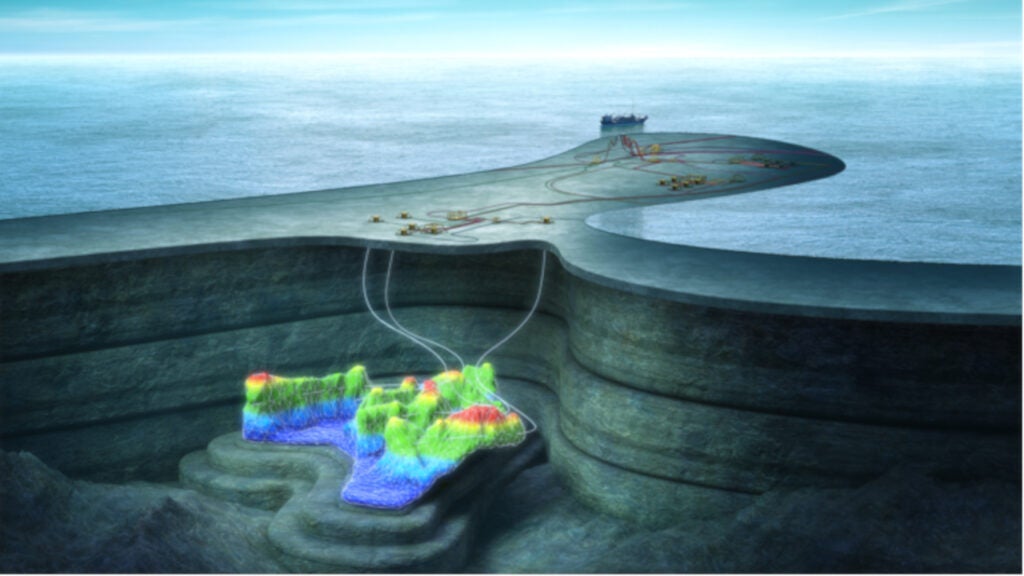The North of Alvheim (NOA) Fulla oil and gas field is planned to be developed at a water depth of 110m, approximately 10km north-east of the Frigg field in Central North Sea on the Norwegian Continental Shelf (NCS).
NOA Fulla is co-owned by Aker BP (40%), Equinor Energy (40%), and LOTOS Exploration and Production Norge (20%). Equinor and Aker BP reached an agreement in June 2020 for the joint development of the Fulla, NOA and Krafla licences within the North of Alvheim Krafla Askja (NOAKA) licence area. Aker BP operates the NOA and Fulla licences, while Equinor is the operator of the Krafla licence.
The NOA Fulla field development is expected to enter the execution phase in 2022 while the first production will be in 2027.
The Fulla project will utilise innovative technology and digital solutions during the development and operational phases to improve efficiency, reduce project expenditures and minimise carbon emissions.
NOAKA area details
The NOAKA area, containing several licences and complex reservoirs, stretches between Oseberg and Alvheim fields in the Norwegian North Sea. It will be jointly developed and operated by Aker BP and Equinor Energy. LOTOS Exploration and Production Norge will be the licence partner.
The area will be developed with an estimated investment of more than Nkr50bn ($5.3bn) to extract the estimated total recoverable reserves of more than 500 million barrels of oil equivalent (boe).
NOA Fulla field discovery and appraisal details
The NOA Fulla field was discovered with the drilling of the 30/11-7 wildcat well in production licence (PL) 035 in 2009. The well was drilled to a vertical depth of 4,067m below the seabed in Lower Jurassic sandstone in the Drake Formation of the Brent Group, using the drilling facility West Alpha.
The discovery is estimated to contain approximately one million standard cubic metres (Sm³) to three million standard cubic metres of recoverable oil equivalents.
An appraisal well 30/11-7A was drilled in the PL 035B to a vertical depth of 4,118m below sea level in Middle Jurassic rocks in the Etive Formation, using the Transocean Leader semi-submersible drilling rig in 2009. The well intercepted a 177m column of gas with approximately ten million standard cubic metres to 17 million standard cubic metres of recoverable oil equivalents.
Both wells are currently plugged and abandoned.
NOA Fulla field development details
The NOA Fulla field development will involve the construction of the main processing, drilling, and quarters (PdQ) platform in the south with a topside weighing up to 24,000t. A 15,000t jacket substructure will also be built as part of the project.
An unmanned processing platform, to be operated by Equinor, will be constructed in the north as part of the NOAKA area development. The two platforms will have certain shared infrastructure including oil and gas export pipelines and onshore power infrastructure.
Furthermore, the development will include the installation of the subsea production system including wellheads, 14 standardised vertical subsea trees, a subsea control system based on Vectus™ 6.0 electronics module, four six-slot manifolds and other tie-in and connection systems, as well as 60km of umbilicals.
Vectus 6.0 subsea electronics module
Vectus™ 6.0 is a next-generation subsea electronics module designed to remotely control offshore oil and gas production systems. It provides improved power capabilities and reduced implementation risks at oil and gas installations.
The system is designed as a future-proof solution to satisfy future industry requirements.
Contractors involved
The Fixed Facilities Alliance comprising Aker BP, Aker Solutions and Siemens Energy is responsible for the development of fixed facilities while the Subsea Alliance between Aker BP, Aker Solutions and Subsea 7 will develop the subsea production systems for the NOA Fulla field development.
Aker Solutions received a contract from Aker BP to provide the pre-front-end engineering and design (FEED) services for the NOA Fulla field development.
In September 2021, Aker Solutions was awarded a FEED contract as part of the Subsea Alliance for the installation of the subsea production systems for the NOA Fulla field development. It was also awarded the FEED contract for the PdQ platform as part of the Fixed Facilities Alliance.
The subcontractors Cognite and Aize will develop a digital twin for the project in co-operation with Aker Solutions. The two companies will deliver the digital solution as part of the NOA Digital project, a joint initiative with Aker Solutions and Aker BP.
Subsea 7 was selected to conduct the FEED study for the NOA Fulla development project in September 2021. The study will conclude the technical definition of the development before the project’s final investment decision (FID), which is expected in 2022.

